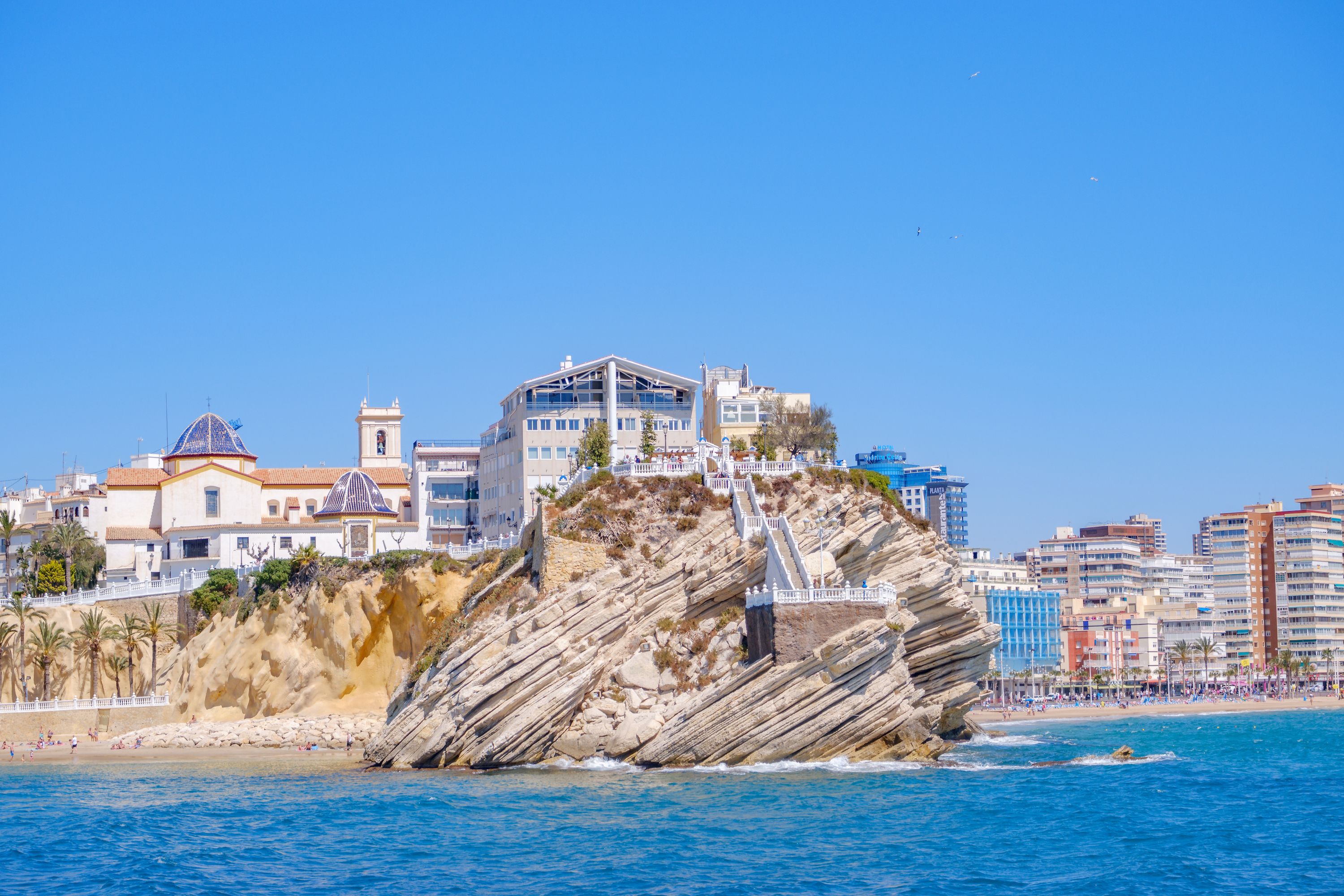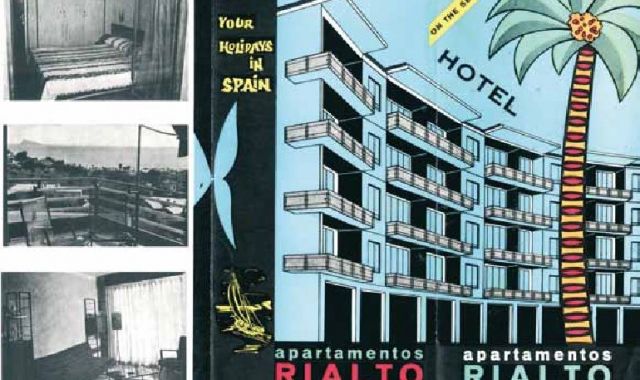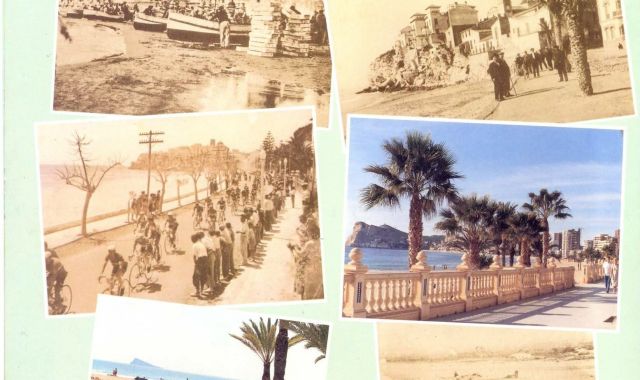
It is an open secret that when a native of Alicante travels to the United Kingdom and is asked where he is from, in most cases the conversation usually unfolds as follows: "Spain. Alicante?" "I don't know..." "Benidorm?" "Yes!!! I've been there many times!" The travel agencies there share the common denominator in that they all offer getaways to the tourist capital of the Costa Blanca. Its popularity is such that even the ITV television channel between 2007 and 2018 broadcast the series Benidorm, about British tourists staying in a hotel, which was a big success and highly acclaimed by critics. The fact is that the British account for almost 75% of the international visitors that the coastal city welcomes each year.
Benidorm is also well-known as a popular IMSERSO destination for the elderly in low season. Thanks to this, the Mediterranean city of skyscrapers enjoys year-round hotel occupancy figures above 70%, according to 2019 data from the Hosbec business association. The share of tourism at the regional level is far from negligible: 23% of travellers who visited Valencia last year went to Benidorm, which is where more than 38% of all overnight stays were registered. In total, the tourist capital of Costa Blanca has 140 hotels and about 41,000 hotel places. Beyond the numbers, it is interesting to find out who is behind the tourist development of Benidorm and what ingredients made a visionary idea possible 60 years ago and led to a break with the values of the time - those of the grey Spain of the Franco regime. Let us review a story that is not too well known.
A town of 2,000 inhabitants with a cosmopolitan mentality
If we look for the origin of tourism in Benidorm, we have to go back to the end of the 19th century. The first hotel to be set up was the Hostal La Mayora, run by the developer Josefa Mayor, in 1865, according to the Hosbec archive. In 1893, the "Botijo" tourist train was in operation, which went from Madrid to Alicante and connected directly with the stagecoach to Benidorm. Then, in 1920 came the Fonda Casa de Baños, of the Ronda family, and the Hostal de la Plaza, of José Calvo and Carmen Llorca. Three more establishments opened in the 1930s (two of them, the Hotel Bilbaino and the Hotel Marconi, are still active), and by the 1950s the hotel explosion was underway.

Poster for the sale of apartments in Benidorm | Hosbec archive
But let’s slow down. Why did this happen in Benidorm exactly? The general secretary of Hosbec, Nuria Montes, has the answers. First, she explains that the starting point for the rise of international tourism was the development of commercial aviation, "when it stopped being an elitist and luxurious means of transport and opened up to a large part of the population." Suddenly thousands of people could be transported thousands of miles away in just a matter of hours
Benidorm, the tourist capital of Costa Blanca, has 140 hotels and about 41,000 hotel places, mostly run by local entrepreneurs
In the specific case of Benidorm, more ingredients came into play that combined to turn it into the capital of Mediterranean tourism that it is today. One aspect Montes points out is "natural factors". "Benidorm covers an area of eight square kilometres with three beaches, of which the two main ones are the only ones in the whole Mediterranean facing completely south. This means that they get sun just about the whole day and they hardly ever see any bad weather. What's more, Benidorm's bays are protected by two mountain ranges, the Serra Gelada and the Serra Cortina, which protect them mainly from the north wind, which is what lowers the temperature. This means that the city always has a pleasant temperature, around 20 degrees in winter, as there is a microclimate in Benidorm.
The mildness of the climate is shared by other places on the coast in the Mediterranean. That Benidorm has become the city it is now also has a lot to do with a "very important sociological factor". Let's go back to the fifties, to black and white Benidorm. “It was an isolated town on the coast which took hours to get to,” Montes says. And it was very small, it had about 2,000 inhabitants. If we discount the elderly, women - who were not in the workforce at the time - and children, we are left with about 700 workers. The Secretary General of Hosbec says that of these, about half were employed by the merchant navy. "This is a very important differential fact to account for the mentality that existed. Much of the workforce spent nine months a year on board ship and visited New York, Buenos Aires, Melbourne, Singapore... the world's great commercial ports. While Spain was completely closed off from the outside, in Benidorm the mentality of the population was tremendously cosmopolitan. They knew that there was a world out there, that there were very tall buildings and they were not afraid of them," says Montes.
The figure of the mayor Pedro Zaragoza
To this combination of factors we must add a key figure in the development of tourist activity in Benidorm: Pedro Zaragoza, a son of a sailor who was mayor from 1950 to 1967. Montes recalls that at that time, "Benidorm was a poor village" with "a small fishing sector and land that was not used, that was not suitable for cultivation." At that time, Zaragoza, inspired by the stories that were brought to the town, promoted a tourism that was then developing and that could become a great source of revenue, as in other cities in the world. He got going with the General Plan of Urban Planning (PGOU) of 1956, the first of its kind in Spain, for which he hired the architect from Alicante, Paco Muñoz. Perhaps because of the rush to put the plan into effect, he did not not include any green areas or facilities.
Zaragoza's plans had to be reined in. For example, on the Mediterrani avenue in Benidorm, which today runs parallel to the beach with two traffic lanes in each direction, he wanted three lanes in each direction, or a total of six; a width of carriageway that not even the Castellana in Madrid could boast. Another anecdote showing his strong personal commitment to tourism and openness was his struggle to legalise the use of the bikini, which was banned in Franco's Spain. When the Civil Guard imposed a fine of 40,000 pesetas on a British tourist for wearing a bikini, an indignant Zaragoza went to El Pardo on his Vespa to convince Franco to authorise the use of the bikini on Benidorm's beaches. He succeeded and in 1952 he issued a decree that not only allowed this type of swimwear but also contemplated fining those who rebuked the women who wore them.
Women in power: they boosted the hotel business
If we look at the list provided by Hosbec of pioneers in the hotel sector in Benidorm from before 1961, it is striking that there are quite a few women's names at a time when they had to ask permission from their husbands to be able to work or even to open a bank account. What’s more, some male promoters were just the visible names of some companies, which were actually run by their partners. Montes explains that the tourism business was driven by women for two reasons.
First, because the best lands were inherited by the sons, that is, the fertile lands of the interior of the county. At that time, and contrary to the perception we have today, the land by the sea was worthless and was left to the daughters. “They were the owners of the land on which the tourist Benidorm was built,” says the general secretary of Hosbec. The second reason lies in the fact that the men were still sailors, so that the first hotel management was left in the hands of women. They were the ones who began to consolidate the industry and the pioneering hotel developers that still survive today had women's names behind them, as in the case of the Hotel El Palmeral (1957) by Josefa Masanet; the Hotel Sol (1957) by Dolores Fuster; and the Hotel Brisa (1957) by María Varela.

Old pictures of Benidorm | Ceded
The first international tour operators who offered loans to hotels to make new establishments, as happened in other parts of Spain, also helped a lot, in exchange for guaranteeing exclusivity and beds for their customers
A local hotel industry
Unlike in other large tourist cities, in Benidorm the low presence of foreign hotel chains stands out. While it is true that there are some, such as the Mallorcan Meliá chain, which arrived in 1970, some 90% are local companies, according to Hosbec. "There are people who take it for granted that Benidorm doesn't have big chains. But the reason there aren't any is because the local entrepreneurs have never wanted to sell to big chains because they are very solvent businesses and haven't needed to. That the businessmen and owners of the hotels are from Benidorm means that they live here, that they buy houses here, that they buy food and clothes here, that their children go to schools here... In short, they do all their consumption in Benidorm and they pass on their wealth to the area. Yet, when an international chain makes a profit, it distributes it among its shareholders, it's listed on the stock exchange, submits to the rules of the financial market and has less local involvement," says Montes.
Nuria Montes (Hosbec): "That the entrepreneurs and owners of the hotels are from Benidorm means that they live here (...) that they do all their consumption in Benidorm and pass on their wealth to the area"
The five big names in the current Benidorm hotel sector are: José María Caballé, from Servigrup (the largest chain in Valencia in terms of the number of rooms available and in annual turnover), which had a turnover of 105.4 million euros in 2018, and has 19 hotels and 4,800 rooms; Javier García of Magic Costa Blanca Hotels, 78.2 million, 13 hotels and 2,600 rooms; Pablo Hernández of Hotels RH, 61 million, 18 hotels and 1,800 rooms; Antonio Mayor of Port Hotels, 43.5 million, 11 hotels and 1,600 rooms; and Pere Joan Devesa of Hotels Poseidón, 35 million, 8 hotels and 1,700 rooms.
On the health crisis: "We will have to live with Covid-19"
Hosbec stopped publishing hotel occupancy data in Benidorm in March 2020, when the Covid-19 health crisis paralysed global economic activity. However, it still registered an occupancy rate of 70.61%. In the months that followed, we saw an unprecedented image in the city: closed hotels, empty beaches. With the borders now open, hoteliers are seeking to get something from the year but they have also resigned themselves to disaster, as Montes points out: "We understand that we won't be able to consolidate a recovery until there is a cure, vaccine or minimisation of the disease that makes it anecdotal. In the meantime, we will have to live with Covid-19."
Hosbec understands that "we won't be able to consolidate a recovery until there's a cure, vaccine or minimisation of the disease"
"Tourism is a very complicated activity where the virus is concerned, because it prohibits or limits everything we sell: contact, happiness, dancing, joy, hugs, family reunions... Isolation is at odds with tourist activity,” she laments. However, she is optimistic about when a vaccine arrives: "Tourists have very short memories, we quickly forget things. When there is no risk, we will travel again as we did before or even more so, because of the great demand that has built up." The problem, she notes, is that "the effects of the economic crisis will come into play." Yet, while she predicts that this will be "serious", it does not frighten them: "We are afraid of the health crisis because we cannot control it, it is not up to us. We prefer the economic crisis because we have already come through others with some success, without going under. We have business tools to control it and to act, whether it is reducing costs, making offers, special products... Right now the market is stagnant due to simple fear."
In addition, Montes argues that sun and beach tourism still has "a great future" because although there are ever more destinations in the world, there are also "many billions more tourists." "The only threat we have seen and that we are actively involved in minimising is the impact of climate change."